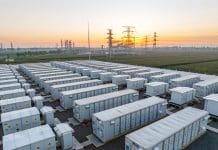Paul Hutchens, Chairman of the Solar Trade Association New Build Working Group and Managing Director of Eco2Solar explains the benefits of fitting solar panels to new build…
Solar is a cheap and easy way of making the new homes and offices we build more sustainable, cheaper to run and compliant with ever more stringent building regulations.
The cost of solar panels has fallen around 70% since 2010 – solar is now cheaper than ever. Back in 2010 it might have cost you £6,000 to fit solar on an average new build. These days all in you are looking at more like £1,500 per plot.
Solar PV has become one of the easiest and lowest cost ways of meeting key carbon compliance standards for 2016 Building Regulations (or Code Level 4 and above of the now scrapped Code for Sustainable Homes). We are convinced that in the long term there is going to be more and more pressure to meet carbon saving requirements on site, rather than using complex offset schemes such as Allowable Solutions, and so we encourage house builders to be early adopters and make it part of their business models now. The government’s own advisers, Zero Carbon Hub, were clear that solar PV on site is the biggest factor in the massive cost drop they recently calculated for Zero Carbon Homes in their revised cost analysis. There are some challenges that need to be overcome however, in that government is potentially ignoring their own advisers advice on new build standards for 2016 – although Labour say they will reinstate stronger Zero Carbon Home standards if they are elected.
North of the border, Scotland is forging ahead with much higher new build standards this year which is set to drive take up of solar. The group I chair at the STA will be working hard to ensure the rest of the UK follows Scotland’s lead, and we will do so with strong public backing; a recent Mintel poll shows 8 in 10 people want to see solar in new homes. A Zero Carbon Home is the star of Ideal Home Show this year too.
Solar is a ‘fit and forget’ technology’, meaning that once it is up on a roof there is virtually no hassle or maintenance with very long warranty periods of 25 years on the panels. The only thing the homeowner will need to be aware of is many inverters, the machine that turns the DC into AC, require replacement every 10-15 years at a cost of about £200.
More and more house buyers are attracted by the idea of living in a sustainable building that is cheap to run and treads lightly on the environment. Solar reduces homebuyers’ energy bills, and brings with it a guaranteed Feed-in Tariff payment for the electricity generated for 20 years to come. When combined with trees, green spaces and well insulated buildings, it can all be part of a ‘green’ marketing package that attracts a lot of buyers – particularly first time buyers.
And it is also a selling point for investors. A poll of property investors conducted by CBRE recently showed that 70% of investors give weight to sustainability considerations when deciding where to put their money.
For any roofs that are perhaps too small or shady to be suitable for solar PV, there is also the option of solar thermal hot water heating. Even in northern climates solar thermal can easily provide between 50-70% of hot water needs over the year.
Solar PV is strikingly easy to install – the scaffolding is up anyway to tile the roof, so you might as well place a solar panel on there. Roof integrated panels are by far the most popular for new build homes. We are also now seeing more and more ‘all black’ panels rather than the classic ‘blue squares’ panels, which blend in well. And if you really want to push the boat out on aesthetics then there is also the option of solar tiles – the same size and shape as slate roof tiles – to blend in with the roof even more.
Solar doesn’t take up precious internal space in our flats and homes either, other than a small inverter unit bolted to a wall in a loft or garage. In urban areas where every square metre comes at a premium, that is a compelling reason to choose solar over bulky biomass boilers or other green alternatives.
The supply chain is there. The stock is there. The prices are tumbling. The legislation mandating house builders to include green measures is becoming more and more stringent. If you’re building a home, you might as well build a solar home. ■
. . . . . . . . . . . . . . . . . . . . . . . . . . . . . . . . . . . . . . . . . . . . . . .
Paul Hutchens
Chairman
Solar Trade Association New Build Working Group and Managing Director of Eco2Solar













